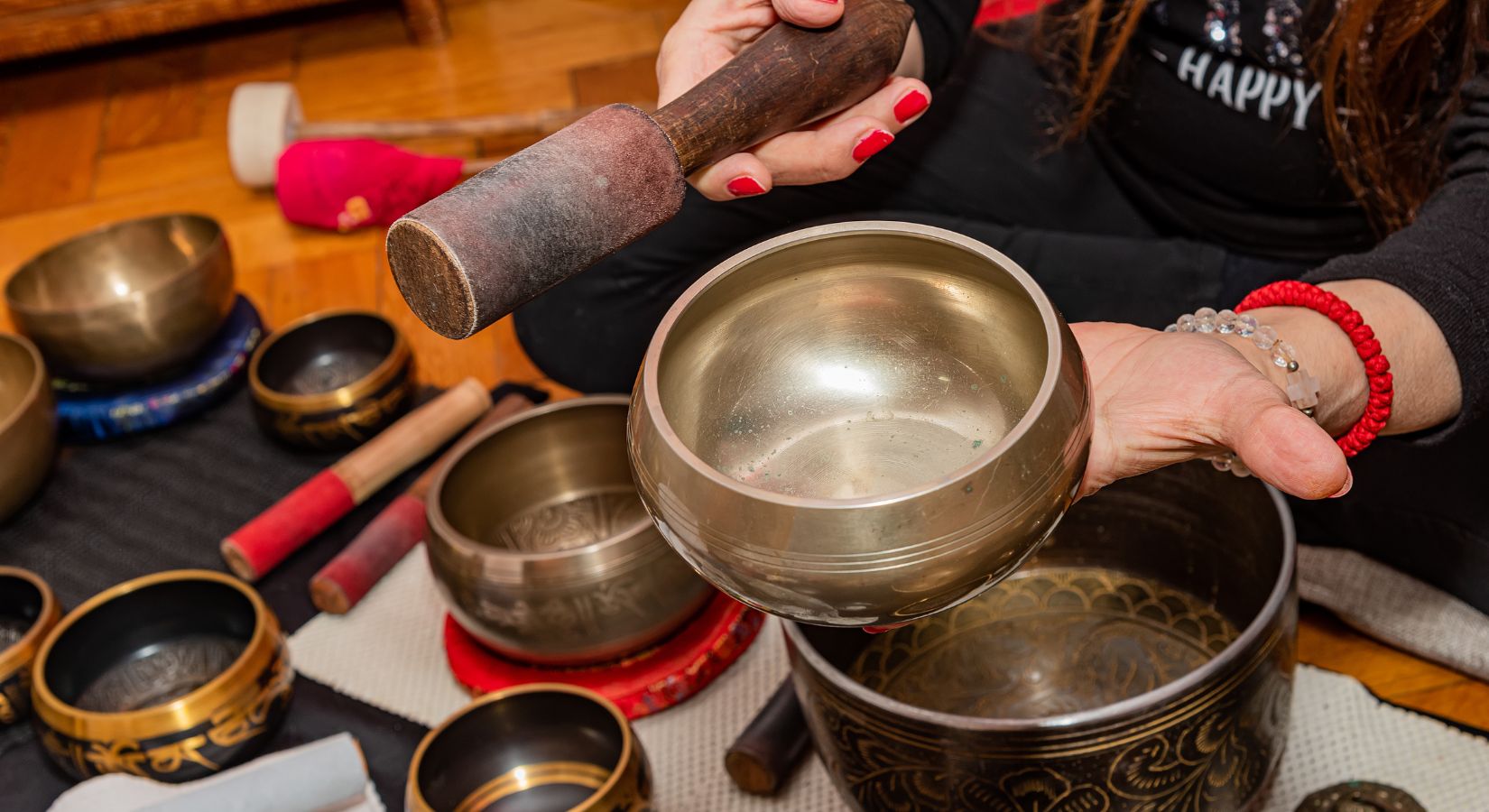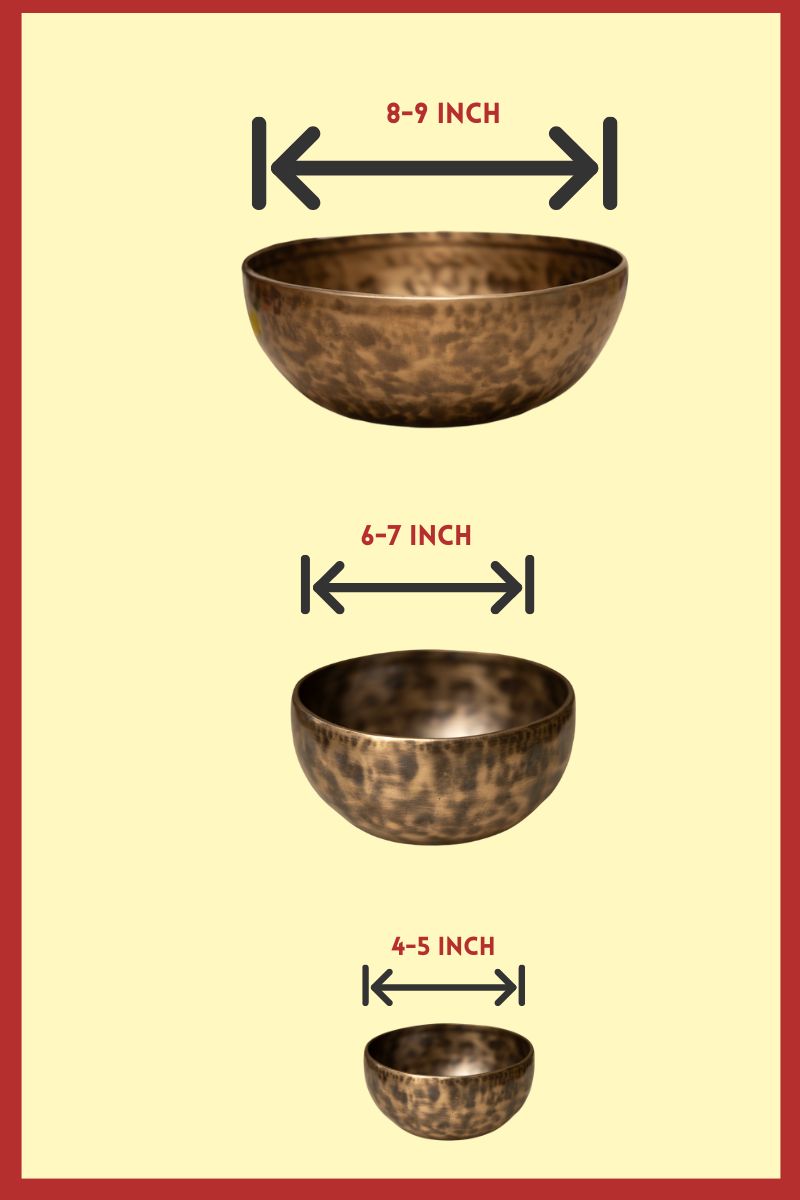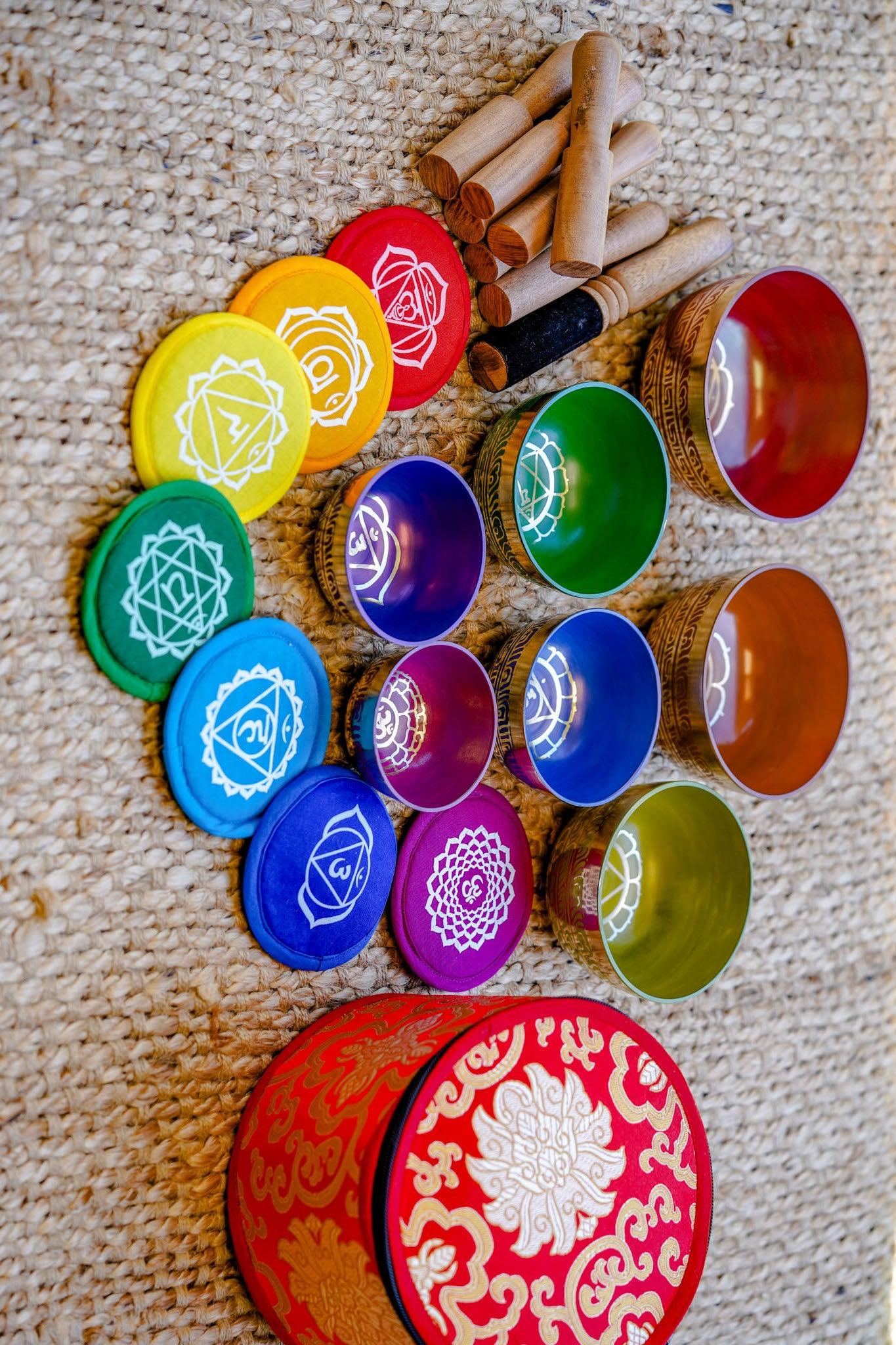Singing bowls, ancient instruments with roots in Tibetan and Himalayan cultures, have gained popularity in recent years for their therapeutic and meditative qualities. Understanding the fundamental elements of a singing bowl, such as its sound note and frequencies, can greatly enhance your experience with this mystical instrument. In this comprehensive guide, we will delve into the methods and techniques to discern the note and frequencies of your singing bowl.
The Anatomy of a Singing Bowl

Before we embark on our journey to identify the notes and frequencies of a singing bowl, it's essential to become acquainted with the intricacies of its anatomy. A singing bowl is a unique and mesmerizing instrument, and understanding its structure enhances our appreciation of its harmonious qualities.
At Himalayas Shop, we take pride in this meticulous process, ensuring that each set meets the highest standards of quality and craftsmanship. We specialize in crafting bowls with specific notes and frequency hertz to meet your desired preferences. Unlike mass-produced options, our bowls are meticulously created and then carefully measured to determine their unique profile. This precision is what sets us apart, making it a challenge to achieve specific notes and frequencies. We encourage you to personally experience the resonance of each bowl; when you find the one that speaks to you, you'll know it's the perfect match. Crafting a comprehensive 7 chakra set demands extensive time and patience, as we meticulously sift through hundreds of bowls to curate one impeccable Singing Bowl chakra set.
A typical singing bowl consists of four fundamental components:
Rim: The Rim is the outermost edge of the singing bowl. It is here that the magic begins. When a mallet or striker is rubbed gently against the rim's surface, it produces a captivating and soothing sound. The friction created along the rim sets the bowl into resonance, sending waves of sound vibrations into the air.
Wall: The Wall refers to the gently curved sides of the bowl that connect the rim to the base. These walls play a significant role in shaping the sound and resonance of the bowl. Their curvature affects the way sound waves are emitted and how they interact with each other, creating the bowl's distinct and melodious tones.
Base: The Base forms the flat, stable foundation of the singing bowl. It not only supports the bowl's structure but also plays a crucial role in anchoring it during use. A stable base ensures that the bowl remains steady when you play it, allowing for consistent and clear sound production.
Lip: The Lip is the innermost edge of the bowl, situated just below the rim. This part often features intricate and artistic engravings or designs, adding to the bowl's aesthetic appeal. While the lip doesn't directly produce sound, it can influence the resonance and harmonics by redirecting sound waves as they travel through the bowl.
These four elements, working in harmony, create the unique and enchanting sound that singing bowls are renowned for. As we delve deeper into understanding the notes and frequencies of singing bowls, keep in mind the significance of each component in shaping the beautiful music that emanates from these exquisite instruments.
Understanding Sound Notes and Frequencies in Singing Bowls

Singing bowls, with their mesmerizing tones and enchanting melodies, offer a captivating world of sound exploration. To truly appreciate the harmonic richness of these unique instruments, it's essential to delve into the realms of sound notes and frequencies.
Sound Notes: Unlocking Musical Magic
The soul of a singing bowl lies in its ability to produce distinct sound notes, each akin to a musical pitch found on a piano's keyboard. These sound notes are the essence of the bowl's music, and they are determined by the frequency at which the bowl vibrates when it is gently struck or played. Just as each piano key produces a specific tone, singing bowls can generate a wide range of notes. This diversity spans from the resonant depths of the lower octaves to the ethereal heights of the higher ones, resulting in a captivating spectrum of sounds.
Frequencies: The Pulse of Harmonic Energy
The key to unraveling the mystery of singing bowl notes lies in understanding frequencies. Frequency is the measure of the number of vibrations or cycles a sound wave completes in one second, and it's quantified in units called Hertz (Hz). For example, if a singing bowl vibrates at 440 Hz, it produces the musical note 'A4,' a standard tuning used in various musical instruments.
Methods to Determine Your Singing Bowl's Note
Method 1: Using a Tuning App
Download a Tuning App: To measure the frequency of a singing bowl or any sound, you can use a tuning app. Here are some popular options for both Android and iOS:
For Android:
- "Tuner - G-strings Free": This is a highly rated and accurate tuning app available on the Google Play Store.
- "Pano Tuner - Chromatic Tuner": Another well-regarded choice for Android users.
For iOS:
- "insTuner - Chromatic Tuner": This is a reliable tuning app available on the Apple App Store.
- "Tuner Lite by Plusadd – Chromatic Tuner": It's a free and user-friendly tuner app for iOS devices.
Prepare Your Bowl: Place the singing bowl on a stable surface, ensuring it won't move during the process. This stability is crucial for accurate frequency measurement.
Strike the Bowl: Gently strike the rim of the singing bowl with a padded mallet. This action will create a resonating sound from the bowl.
Use the App: Open the tuning app you've downloaded on your smartphone. Hold the microphone of your device close to the singing bowl, positioning it to capture the sound clearly.
Read the Detected Frequency: As the singing bowl produces its sound, the tuning app will display the detected frequency on your smartphone screen. This frequency reading will give you an idea of the pitch and can be useful for various purposes, including chakra healing or musical tuning.
Method 2: Harmonic Analysis
Strike the Bowl with a Mallet: Again, gently strike the bowl's rim with a mallet.
Listen for Overtones: Pay close attention to the secondary, higher-pitched tones that accompany the main note. These overtones can provide clues to the bowl's fundamental frequency.
Compare with a Reference Chart: Refer to a reference chart that lists common singing bowl notes and their associated frequencies. Try to match the sound of your bowl with those on the chart.
Different notes and their frequencies, along with a simplified chart

Here's a simplified chart:
|
Chakra |
Note |
Frequency (Hz) |
Associates With |
|
Root |
C |
256 |
Grounding, Stability, and Security |
|
Sacral |
D |
288 |
Creativity, Passion, and Emotional balance |
|
Solar Plexus |
E |
320 |
Personal power, Self-esteem, and Confidence |
|
Heart |
F |
352 |
Love, Compassion, and Emotional healing |
|
Throat |
G |
384 |
Communication, Self-expression, and Truth |
|
Third Eye |
A |
432 |
Intuition, Insight, and Spiritual awareness |
|
Crown |
B |
480 |
Higher consciousness, Enlightenment, and Spiritual connection |
Conclusion: The Harmonic Symphony
Mastering the art of identifying the note and frequencies of your singing bowl opens up a world of possibilities for its use. Whether for meditation, therapy, or musical accompaniment, this knowledge empowers you to harness the full potential of this ancient instrument. So, embark on your sonic journey, and let the harmonic symphony resonate through your soul.
Incorporating these techniques into your practice will deepen your connection with the singing bowl, unlocking its true potential for healing and transformation. Embrace the mysteries of sound and let your singing bowl guide you on a path of inner harmony and self-discovery.







